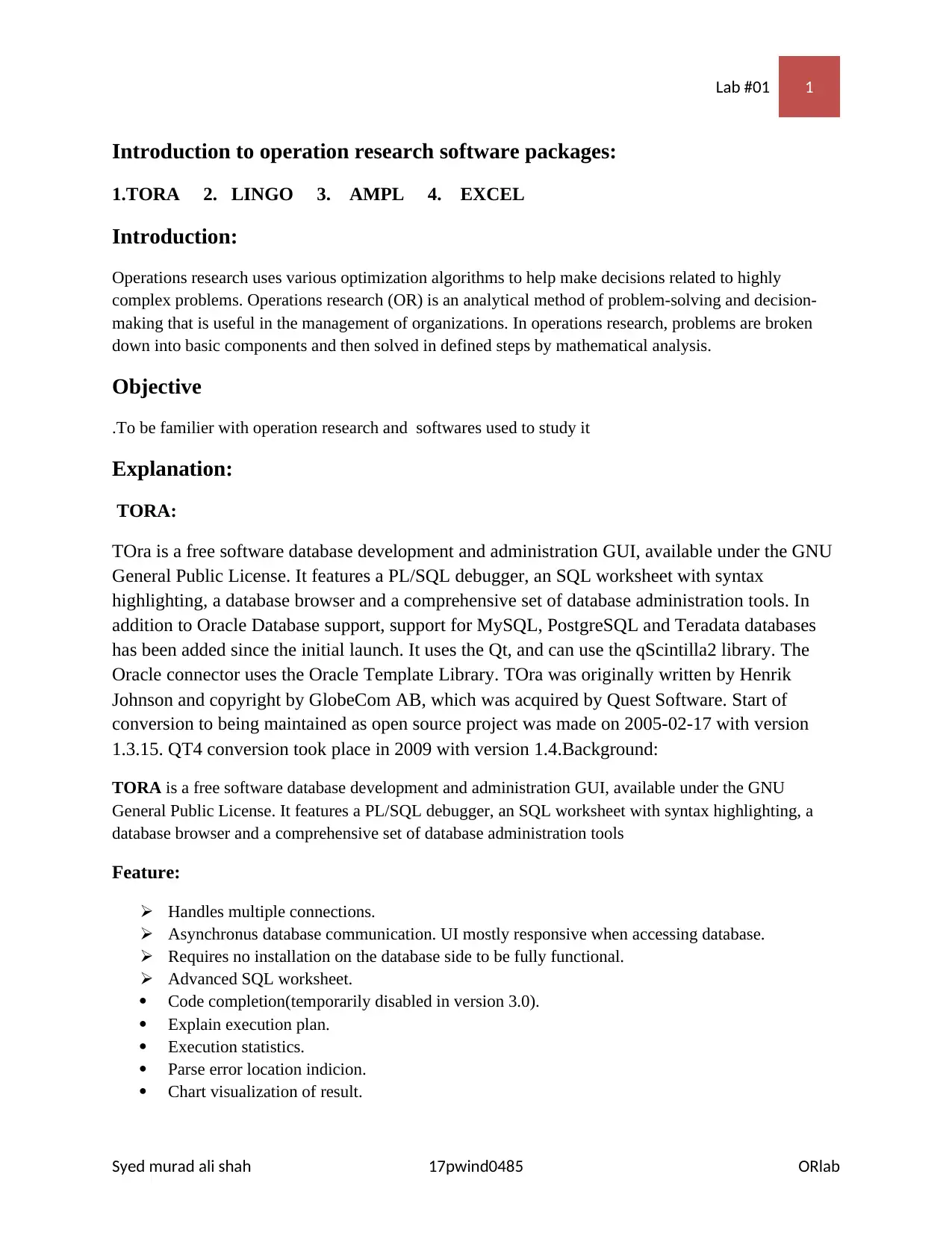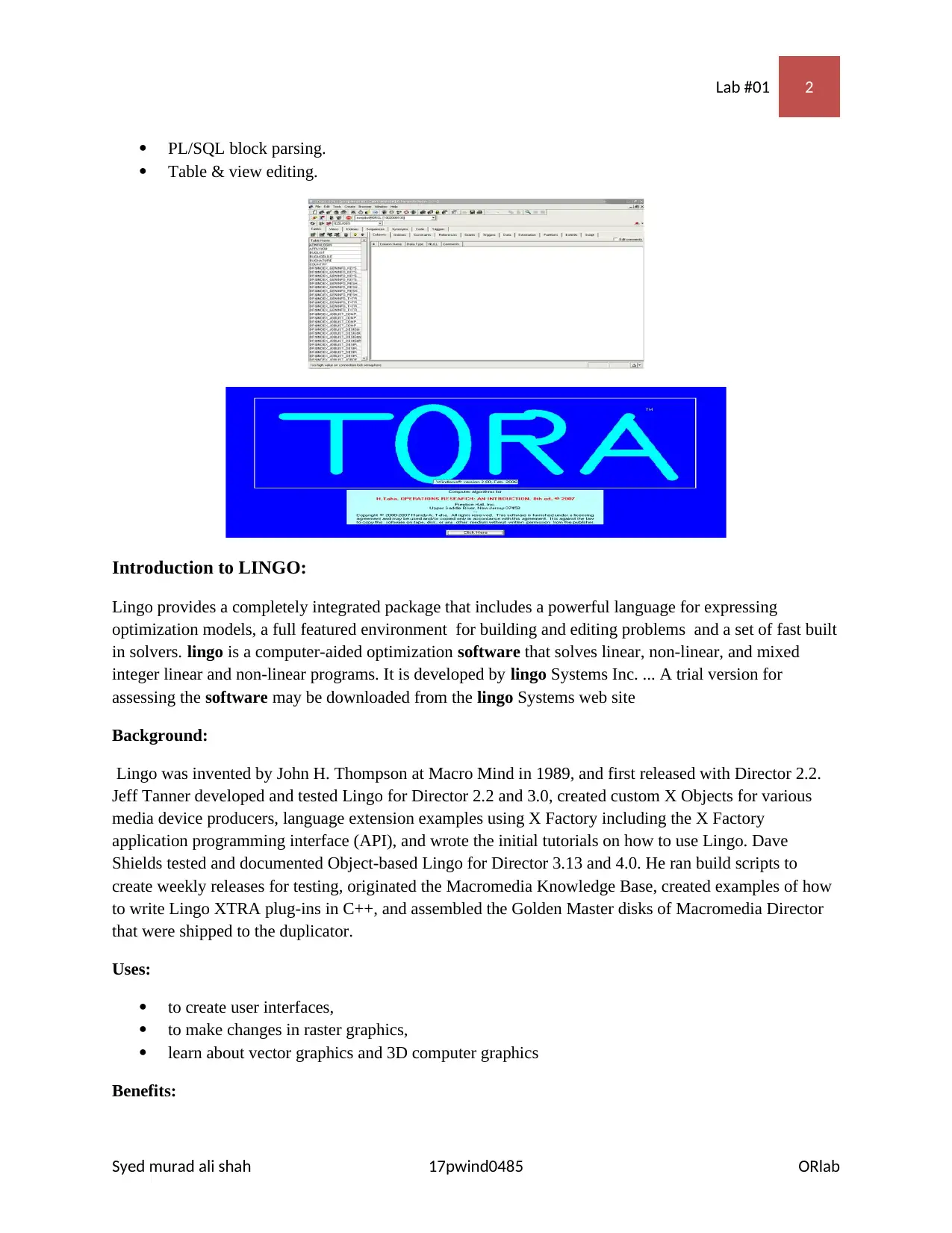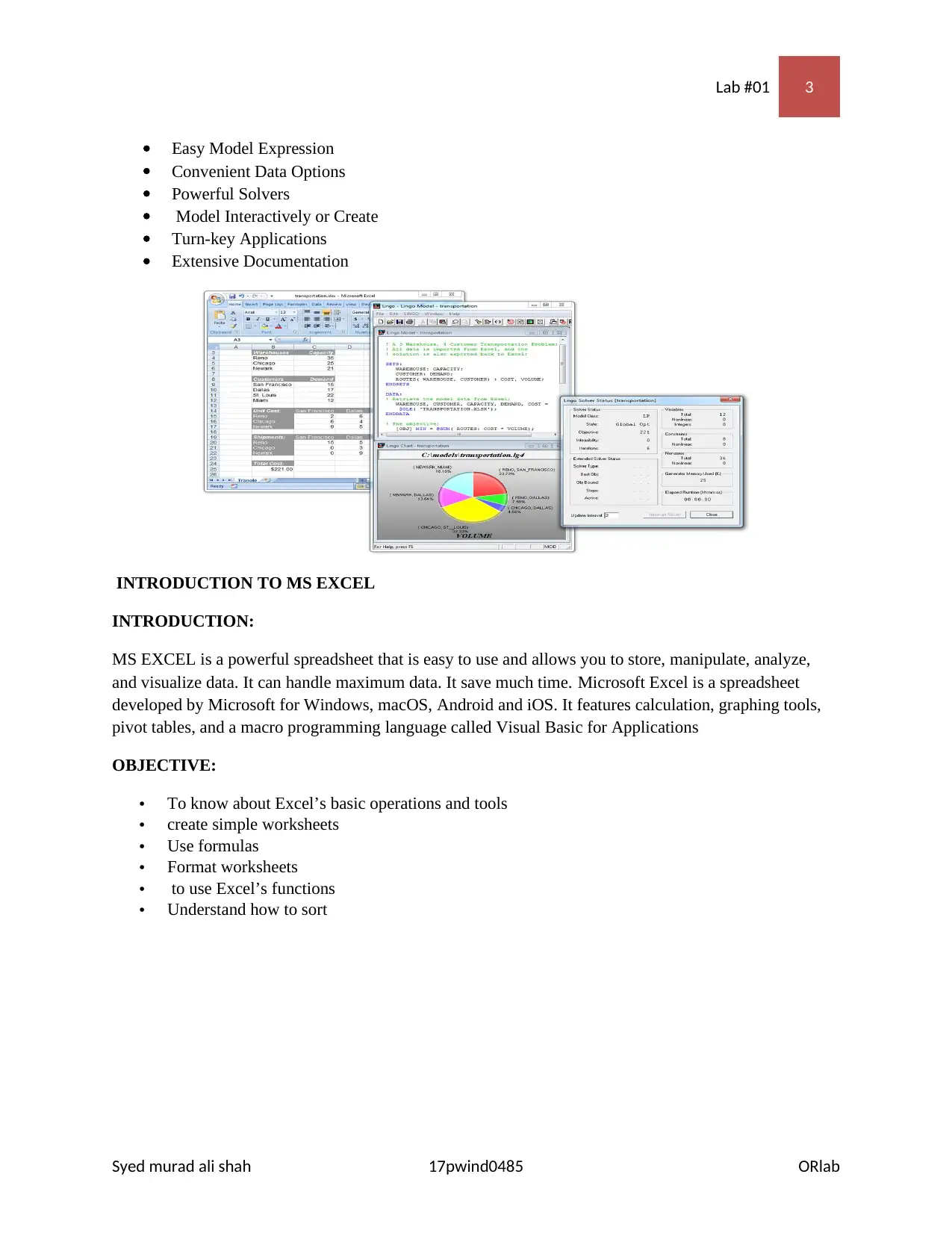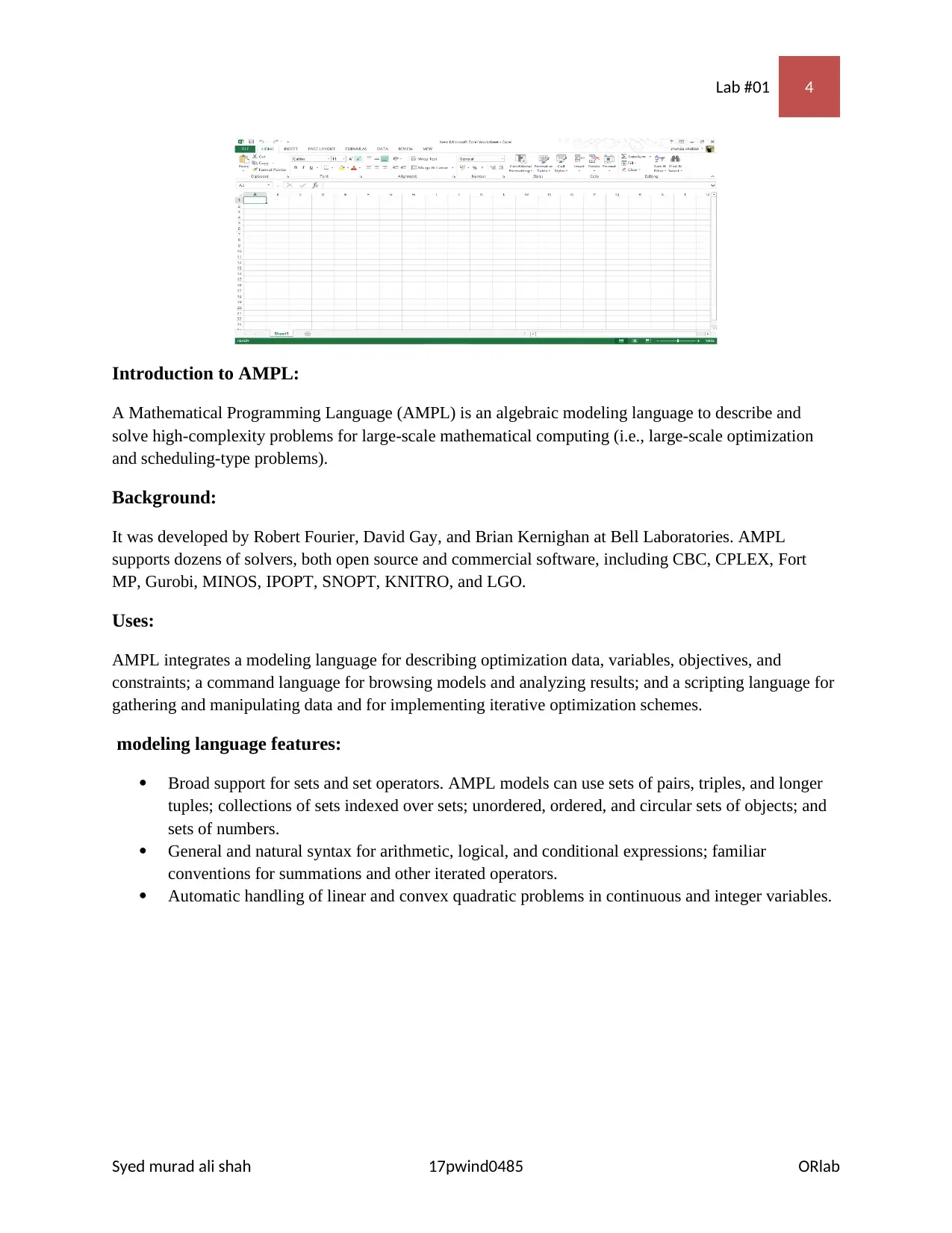17P-WIND-0485: Lab 01 - Operation Research Software Packages
VerifiedAdded on 2022/11/21
|4
|929
|22
Practical Assignment
AI Summary
This assignment provides an introduction to several software packages used in operations research. It covers TORA, a GUI for database development and administration, including its features and background. LINGO, a comprehensive package for expressing and solving optimization models, is discussed, highlighting its uses and benefits. The document also introduces MS Excel, emphasizing its spreadsheet capabilities for data manipulation and analysis, along with its basic operations and tools. Finally, AMPL, an algebraic modeling language for complex mathematical problems, is presented, detailing its background, uses, and modeling language features. The objective is to familiarize the reader with these tools and their applications in the field of operations research, providing insights into their functionalities and capabilities for solving diverse problems. The assignment is contributed by a student and is available on Desklib, a platform for AI-based study tools.
1 out of 4






![[object Object]](/_next/static/media/star-bottom.7253800d.svg)